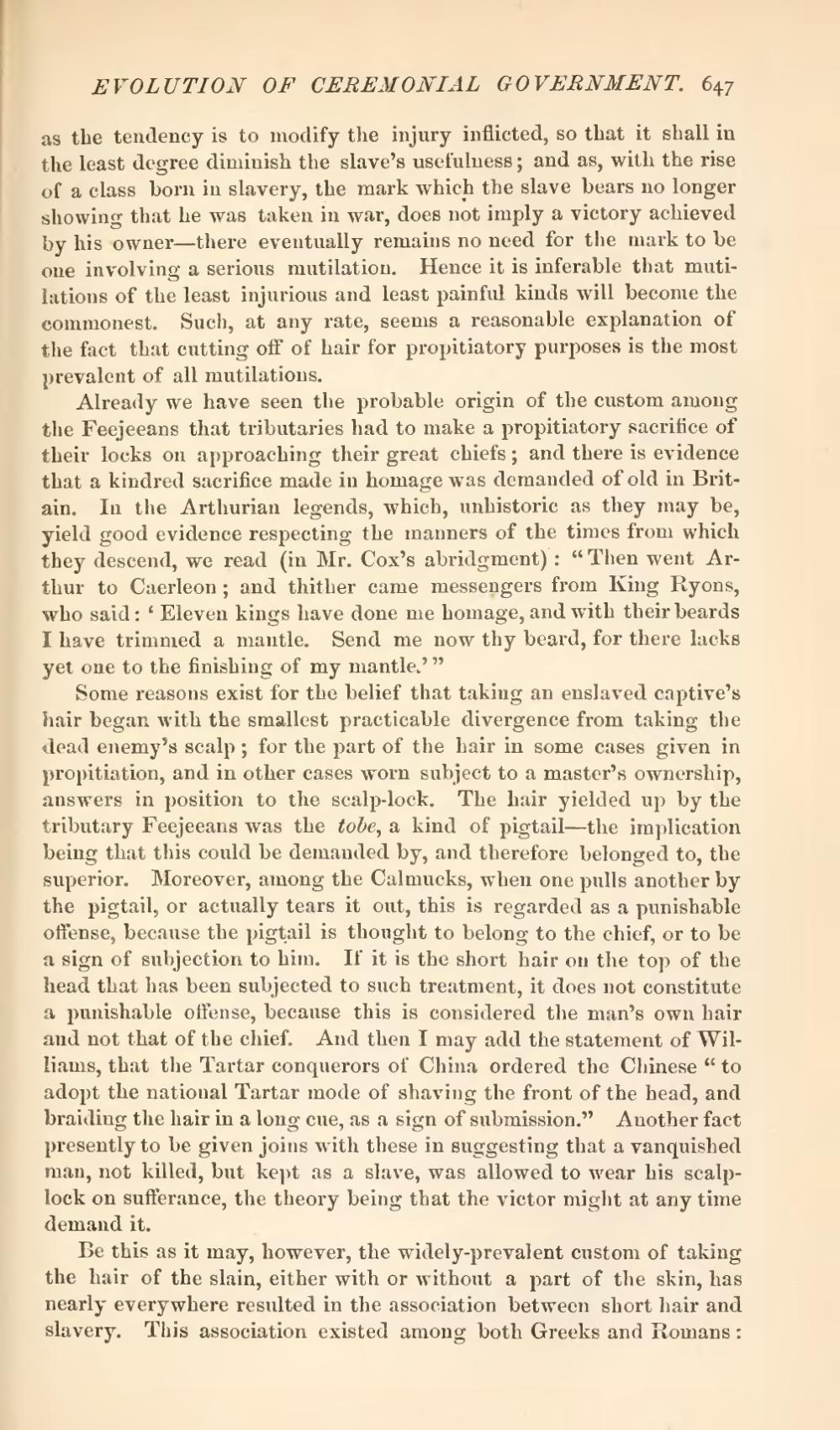as the tendency is to modify the injury inflicted, so that it shall in the least degree diminish the slave's usefulness; and as, with the rise of a class born in slavery, the mark which the slave bears no longer showing that he was taken in war, does not imply a victory achieved by his owner—there eventually remains no need for the mark to be one involving a serious mutilation. Hence it is inferable that mutilations of the least injurious and least painful kinds will become the commonest. Such, at any rate, seems a reasonable explanation of the fact that cutting off of hair for propitiatory purposes is the most prevalent of all mutilations.
Already we have seen the probable origin of the custom among the Feejeeans that tributaries had to make a propitiatory sacrifice of their locks on approaching their great chiefs; and there is evidence that a kindred sacrifice made in homage was demanded of old in Britain. In the Arthurian legends, which, unhistoric as they may be, yield good evidence respecting the manners of the times from which they descend, we read (in Mr. Cox's abridgment): "Then went Arthur to Caerleon; and thither came messengers from King Ryons, who said: 'Eleven kings have done me homage, and with their beards I have trimmed a mantle. Send me now thy beard, for there lacks yet one to the finishing of my mantle.' "
Some reasons exist for the belief that taking an enslaved captive's hair began with the smallest practicable divergence from taking the dead enemy's scalp; for the part of the hair in some cases given in propitiation, and in other cases worn subject to a master's ownership, answers in position to the scalp-lock. The hair yielded up by the tributary Feejeeans was the tobe, a kind of pigtail—the implication being that this could be demanded by, and therefore belonged to, the superior. Moreover, among the Calmucks, when one pulls another by the pigtail, or actually tears it out, this is regarded as a punishable offense, because the pigtail is thought to belong to the chief, or to be a sign of subjection to him. If it is the short hair on the top of the head that has been subjected to such treatment, it does not constitute a punishable offense, because this is considered the man's own hair and not that of the chief. And then I may add the statement of Williams, that the Tartar conquerors of China ordered the Chinese "to adopt the national Tartar mode of shaving the front of the head, and braiding the hair in a long cue, as a sign of submission." Another fact presently to be given joins with these in suggesting that a vanquished man, not killed, but kept as a slave, was allowed to wear his scalp lock on sufferance, the theory being that the victor might at any time demand it.
Be this as it may, however, the widely-prevalent custom of taking the hair of the slain, either with or without a part of the skin, has nearly everywhere resulted in the association between short hair and slavery. This association existed among both Greeks and Romans:
